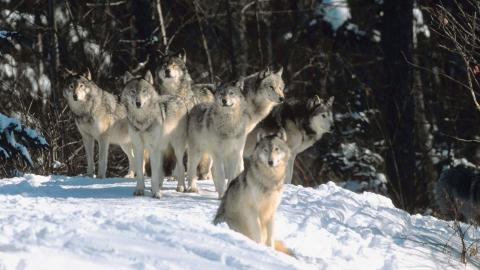Study shows that larger species do develop more cases of cancer, disproving Peto's paradox
Peto´s paradox is the lack of observed relationship between the size of an animal and the prevalence of cancer, despite the fact that the greater number of cells and divisions as they get larger should increase the likelihood of cancer. A new study disproves this paradox by finding that, at least in terrestrial vertebrates, larger species do develop more cases of cancer. In quite a few of them, however, the increase is less than would be expected, suggesting that they have evolved anticancer mechanisms that remain worth studying. The results are published in the journal PNAS.

Thomas - Peto (EN)
Frédéric Thomas
Evolutionary biologist and CNRS research director at the University of Montpellier (France)
Antoine Dujon
CNRS researcher at the University of Montpellier (France) and Deakin University (Australia)
What do you think of the study overall? Is it of good quality?
“This study provides an interesting analysis of the relationship between body size and cancer prevalence. The authors use advanced phylogenetic comparative methods, and the diversity of species analyzed (amphibians, birds, mammals, and reptiles) offers a broad and relevant framework. However, it is important to note that the entire message of this PNAS paper relies on specific statistical choices, which remain just that—choices. These choices, as in any complex analysis, are more or less debatable. In this context, there is no doubt that other scientists may legitimately take a critical perspective on this work and its conclusions”.
How does it fit with the existing evidence, and what is new about it? What implications could it have?
“This study revisits a fundamental question in evolutionary biology and comparative oncology: the relationship between body size and cancer prevalence. Unlike some previous research that found no systematic link, it highlights a positive association between size and malignancy across the four vertebrate classes studied.
It also suggests that, in birds and mammals, rapid evolutionary increases in body size are associated with a decreased prevalence of cancer, implying the co-evolution of enhanced cellular growth control mechanisms. However, within the philosophy of Peto’s paradox, the real question is not just whether there is a positive relationship between size and cancer prevalence, but whether this relationship is as strong as expected given the increased number of cell divisions associated with larger body size. In other words, there may be a positive correlation between size and cancer risk, but if this correlation is weaker than statistically expected, it suggests that natural selection has nonetheless favored superior anti-cancer defenses in large-bodied species. This is a crucial point, as it highlights the evolutionary trade-offs between growth, longevity, and disease resistance”.
Are there important limitations to take into account?
“Like any macro-evolutionary study, it relies on cancer prevalence data that may be incomplete or heterogeneous across species. Moreover, the precise mechanisms underlying anti-cancer adaptations remain to be explored in more detail, particularly through functional or molecular approaches. Another potential limitation is the influence of biases related to lifespan and alternative causes of mortality, which may affect cancer prevalence estimates. Furthermore, given that the study’s conclusions rest on specific statistical decisions, it is essential to consider how different methodological approaches might lead to alternative interpretations. This reinforces the need for a cautious reading of the results and for future studies to explore different modeling strategies to assess the robustness of these findings.
Beyond size and longevity, other factors should be considered. Our team has also proposed that, to understand the evolution of anti-cancer defenses, it is essential to broaden the focus to other traits that, in theory, should increase cancer risk but where evolutionary compensation may exist. For example, pronounced secondary sexual traits (such as antlers in deer) involve rapid and repeated cell growth, which could promote tumor formation. However, these species do not systematically exhibit high cancer rates, suggesting the presence of specific adaptations to mitigate this risk. Similarly, structures like invasive placentas, which induce intense cellular proliferation, could be associated with reinforced tumor control mechanisms. This integrative approach would provide a more comprehensive view of the anti-cancer strategies that have evolved over time”.
Lisa Abegglen - cáncer Peto (EN)
Lisa Abegglen
Researcher and Assistant Professor, Division of Paediatric Haematology and Oncology, Department of Paediatrics, University of Utah (USA)
The study used data we collected and analyzed for our Cancer Discovery manuscript, although they took a different analysis approach.
Overall, I think the implications are very similar that what has already been reported. Despite the title, they do report evidence of Peto’s Paradox: animals that evolved large body size rapidly do have lower malignancy rates. It’s possible to have a paradox related to body mass and cancer across some species, as Sir Richard Peto originally observed when comparing mice and men, but not others. Peto’s paradox does exist, but maybe not across all species.
One limitation of this study is that the sample sizes for each species that was analyzed here was highly variable. Differences in sample size should be accounted for.
This study supports our efforts to identify enhanced mechanisms of cancer defense across species by exploring animals that develop less cancer than expected based on their size. Specifically, it confirms our previous findings that elephants exhibit lower cancer rates than predicted, as demonstrated through an analysis of Asian elephants. Our published research documenting cancer in elephants found that African elephants, the larger of the two species, exhibit even lower rates of neoplasia and malignancy than Asian elephants. These findings reinforce our ongoing work to identify and functionally validate enhanced cancer defense mechanisms and translate them into therapeutic strategies to improve outcomes for human cancer patients.
Overall, identifying species that evolved enhanced mechanisms of cancer defense holds tremendous promise for future preventative and treatment strategies for human cancer.
Conflict of interest: "I am an assistant professor of Pediatric Oncology/Hematology at the University of Utah and a consultant for Peel Therapeutics, a biotech company focused on transforming natures solutions to disease into medicines for patients with cancer and immune diseases".
Amy Boddy - cáncer Peto (EN)
Amy Boddy
Associate Professor at the University of California (USA)
This work is exciting, and I'm glad people are using the data we published!!
I believe this further supports the most recent existing evidence that has been published of a positive relationship between body mass and neoplasia/cancer prevalence (see: Compton et al, Bulls et al, and Metzger ). I think the most novel contribution is the statistical methods and including the evolutionary history of body size evolution. This work shows accelerated body size evolution is linked to a reduced prevalence of neoplasia and malignancy.
The findings on Asian elephants are intriguing but they may also be outliers in terms of cancer susceptibility as well. Previous work has shown that Asian elephants are more susceptible to cancer (and other diseases) compared to African elephants, which have very few reported cases of cancer and neoplasia (see Tollis et al). If the results are indeed true, and bigger animals get more cancer, I would have loved to see this validated with cancer mortality data. In other words, even if bigger species get more cancer, does this cancer impact their mortality?
It's always important to be cautious when interpreting these results due to small sample sizes and these types of statistical methods can have high error rates. In general, we should interpret that these larger species still get less cancer than expected for an animal of their body size. Some species in the dataset have only 20 individuals per necropsy and the breadth (amount of animals) is limited to what is housed in a zoological institution. Adding more species and more individuals per species is going to be a critical next step to validate the relationship between body mass, lifespan and cancer risk.
The authors admit that "increased rates of body size evolution are associated with the evolution of improved cellular growth control", and mechanisms for this reduced rate in cancer are yet to be discovered!! These mechanisms could be improved cellular growth, better immune function, lower germline mutation rates, or a combination of those factors - depending on what lineage you look at!
Conflict of interest: "The only conflict I have is that I am a co-author on the paper and data they used to reanalyze and "criticize the methods". On the other hand, I know the data very well, and can comment on some of the limitations with this type of data".
Carlo Maley - cáncer Peto (EN)
Carlo Maley
Director of the Arizona Cancer Evolution Center and Professor at the University of Arizona (USA)
The thing that surprises me is that evolutionary rate of body size is associated with lower cancer rates. I think it is important if that change in body size is increasing or decreasing body size. If species increase their body size, we would predict there would be some lag time before evolution generated enough cancer defenses to defend the new larger body. In contrast, species that decreased their body size should have inherited stronger than needed defenses, and there should be some evolutionary lag before their defenses decay to equilibrate with their new small size.
In the abstract they say: "Yet, to date, no evidence has been found to support this expectation, and no association has been found between cancer prevalence and body size across species". But that is not true. Their reference 13 from which they got the data shows there is a statistically significant but weak relationship: larger animals get slightly more cancer. They say in their intro that we found an association between body size and neoplasia but not malignancy, but that is wrong. We did find an association with malignancy prevalence, especially when you control for gestation time. They seem to have missed this.
Butler et al.
- Research article
- Peer reviewed
- Observational study
- Animals



